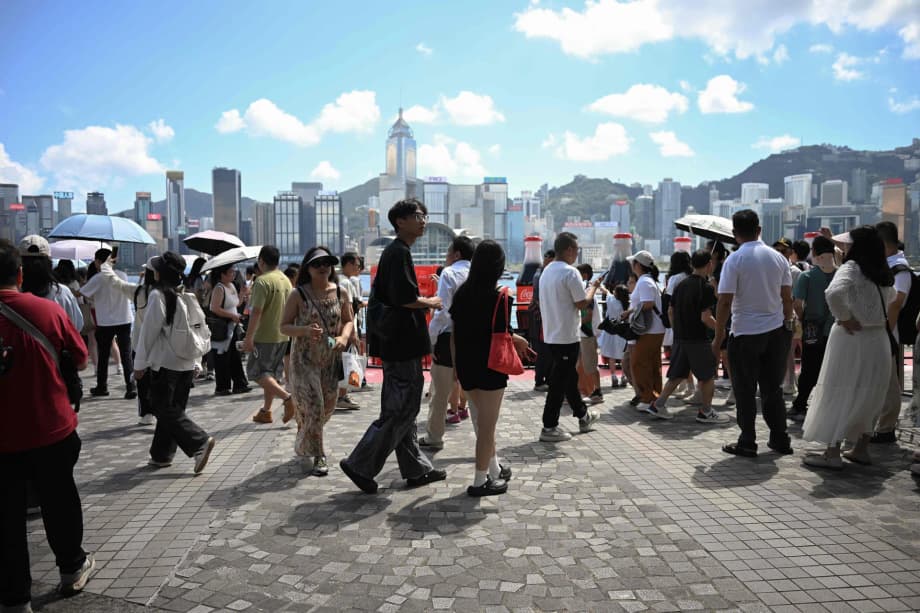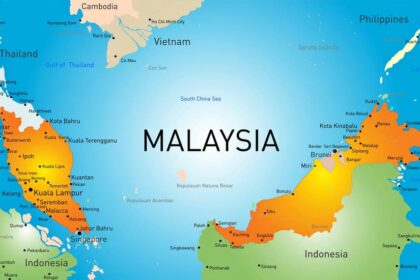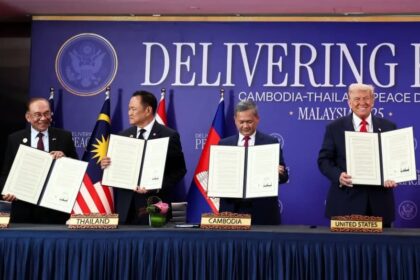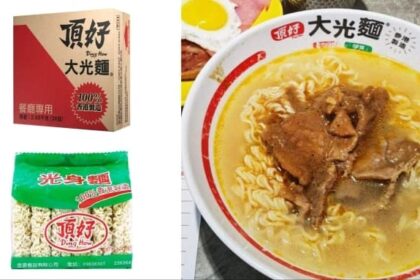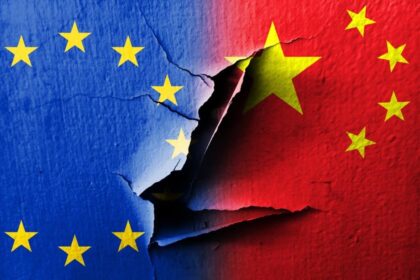A new retail reality on Hong Kong streets
Walk through Hong Kong’s busiest shopping corridors and the change is hard to miss. Mainland Chinese brands, from chain restaurants and tea shops to sportswear, jewelers and electronics makers, now anchor many new storefronts. Local shoppers are embracing them. Price points compete, designs look fresh and service feels faster. The result is a retail landscape that looks very different from the heyday when Hong Kong labels defined quality for the region.
- A new retail reality on Hong Kong streets
- Why mainland brands are winning on service and speed
- Phones, food and gold: sectors reshaped
- Retail property shift and the rent equation
- Shoppers and spending patterns are changing
- Digital commerce and marketing reshape competition
- Identity, policy and the balance between integration and distinctiveness
- How Hong Kong brands can respond
- Key Points
A recent launch just across the boundary captures why many consumers are switching. Honor, the Chinese smartphone maker, opened a two level flagship in Shenzhen Bay minutes from Hong Kong. The store displays a full ecosystem of devices and uses robots to assist visitors. The experience feels sharper than the cookie cutter phone shops seen in parts of Hong Kong. Many residents now spend weekends up north for dining and shopping, lured by frequent product updates, attentive follow ups and a sense of novelty.
This marks a reversal of roles. In the 1970s and 1980s, as Hong Kong boomed, locals brought medicines, small electronics and canned goods to relatives on the mainland. Trust in Hong Kong quality peaked around 2010, when mainland production still struggled with uneven standards and counterfeits. That gap has narrowed. Mainland manufacturing has climbed up the value chain, quality control has improved and brands have learned to tell compelling product stories. In categories that touch daily life, from phones to pantry staples, Hong Kong consumers now view many mainland brands as safe, well designed and good value. Long established Hong Kong names risk looking rigid or dated by comparison.
Why mainland brands are winning on service and speed
Service, speed and scale sit at the core of the mainland playbook. Supply chains are integrated with digital platforms, so stock moves quickly and in store assortments mirror what shoppers browse online. New models land on tight cycles, and customer service teams follow up by phone or chat. Flagships invite interaction with large demo zones and guided stations. Payments are instant, returns are simpler and product ecosystems, especially in tech and wearables, feel cohesive.
Pricing matters but the pitch is not only about bargains. Many mainland entrants see Hong Kong as a stage. Profit can wait while they build awareness, test overseas ready operations and signal ambition to partners. The property backdrop supports that approach. With rents easing from past peaks, a statement store with generous space and polished design is more attainable. Shoppers get fresh environments and a perception of better value for money.
Cultural and linguistic familiarity lowers friction. Staff can switch between Cantonese, Mandarin and English. Product features adapt to local tastes without long delays. Analysts estimate that mainland brands now account for more than a third of new retailers entering the city each year, a share that has climbed quickly. Hong Kong also serves as an accessible first step toward Southeast Asia, giving brands reason to plant a visible flag.
Phones, food and gold: sectors reshaped
Technology best illustrates the shift. In recent years Chinese phone makers have overtaken Apple and Samsung in Hong Kong market share. Flagship releases from Huawei, Honor and Xiaomi often sell out quickly, with stores struggling to keep up in the first weeks. Factories that once produced only for global labels now build premium lines for homegrown brands. Strong industrial muscle meets sleek marketing and fast after sales support, and younger buyers in particular are voting with their wallets.
The dining scene tells a similar story. Along Tsim Sha Tsui’s crowded streets, long running local eateries now sit beside bright, spacious chains from the mainland. One example has become a shorthand for the moment. Hefu Noodle, a stylish chain with similar pricing to traditional shops, drew steady lines with design, menu innovation and trained staff. Next door, a neighborhood favorite saw traffic fall.
A staff member at Prince Noodles, a long running brisket and offal shop, described how the arrival of the new rival hit trade.
They have taken away half of our business since they opened, because their mainland owner has deep pockets for top notch decorations.
Transport underscores the brand shift as well. Before 2022, Tesla dominated electric vehicle registrations in Hong Kong. By 2025, seven in ten newly registered EVs are Chinese marques. Eric Wong, chairman and chief executive of dealer Richburg Motors, said perceptions have turned.
In the old days, Hong Kong people would not buy Chinese cars. Now the quality is good, the price is hard to beat and the design is fashionable.
Even with thin margins in a small and competitive market, automakers view Hong Kong as a proving ground. Meeting European level certification standards in the city helps pave the way to other regions.
Jewelry, a category once synonymous with Hong Kong prestige, is seeing fresh competition. Laopu Gold, founded in 2009, has outperformed traditional Hong Kong houses during key shopping periods by promoting traditional gold craftsmanship and royal techniques in contemporary forms. It has opened multiple branches in the city and treats Hong Kong as a springboard to overseas markets. One flagship, a 10,000 square foot space in the Silvercord center in Tsim Sha Tsui, pays about HKD 1.5 million a month in rent. The same site previously housed a top luxury fashion label at rents above HKD 6 million at the peak. Lower rents, content rich marketing and a steady flow of younger shoppers have delivered heavy footfall.
Retail property shift and the rent equation
Behind the changing storefronts lies a property cycle that reset costs and expectations. Official data show Hong Kong retail sales fell month after month through late 2024, with full year sales down 7.3 percent. Landlords responded with shorter leases, more flexible terms and lower headline rents. Streets that were once off limits to emerging operators opened up.
Vacancy that troubled parts of Tsim Sha Tsui and Causeway Bay after the pandemic created room for experimentation. Mainland brands moved quickly. First came coffee, hotpot and noodles, followed by sportswear, jewelers and consumer electronics. Some mainland internet groups even opened physical stores to meet customers face to face and build community around their platforms.
Leasing brokers report that mainland retailers account for roughly 35 percent of new entrants each year, up from less than a third. Hong Kong is an accessible market to operate and a useful test bed. Many new arrivals are prioritizing visibility over immediate profit while tourism and local spending stabilize.
Andy Kong, chief sales director at Midland Shops, expects churn and fresh faces in the months ahead.
It is anticipated that the retail market will undergo significant restructuring, with some brands likely to be eliminated due to market competition, leading to high vacancy rates. On the positive side, the vacant shops present opportunities for emerging businesses.
Shoppers and spending patterns are changing
Visitor behavior has shifted in ways that matter to retailers. Mainland tourists still account for the majority of arrivals, about three quarters of more than 20 million visitors recorded in the first five months of the year, but the shopping spree pattern has softened. High spenders now split purchases across Shenzhen, duty free zones in Hainan and overseas trips where currency and tax conditions are favorable.
A visitor from Liaoning explained the new mindset during a business trip.
I am staying four days in Hong Kong, but I do not want to spend a penny here. I used to buy bags and watches, but luxury goods are not cost effective anymore since most brands are available on the mainland.
Local factors weigh on spending too. A strong Hong Kong dollar raises the cost of imports. A soft property market dulls the wealth effect for middle class households. Many residents choose to shop during trips to Japan or Southeast Asia where bargains and variety abound. Some overseas brands have consolidated stores or paused openings until sales stabilize.
At the same time, new residents are arriving through talent schemes. Since 2022 nearly 100,000 visas have been issued under the Top Talent Pass, with about 95 percent going to professionals from the mainland. The city’s closer integration with the Greater Bay Area and a shift in resident mix are shaping tastes. Mainland brands that already resonate north of the boundary find ready audiences in Hong Kong’s malls and on its streets.
Digital commerce and marketing reshape competition
Digital channels tie the story together. A recent survey of middle to high income consumers across mainland cities found that 78 percent bought Hong Kong products online in the past year. Shoppers gave Hong Kong goods high marks for safety and authenticity and favored categories such as consumer electronics, fashion and luxury. Cross border marketplaces on Tmall International and JD International handle much of the volume, and fast delivery is a key advantage. Authenticity, merchant reputation and wide selection rank higher than low price when buyers make decisions.
China’s social commerce engine keeps expanding. Live shopping sales reached hundreds of billions of dollars last year and are growing fast year over year. A booming creator economy, including studios that use digital avatars to scale content, gives brands more ways to reach target segments. For Hong Kong companies, the data point to real opportunities in the mainland market even as competition stiffens at home.
Eric Chu Tak hin, an economist at the Hong Kong Trade Development Council, advises brands to plan for many routes to the customer.
Adopt a multichannel strategy. Use established marketplaces and rising social platforms, study the audience and pick influencer partners that fit the product, then show authentic user experiences.
That method echoes what winning mainland brands are doing in Hong Kong. They connect content, commerce and stores into one loop, keep product stories fresh and speak to shoppers in the language and channels they prefer.
Identity, policy and the balance between integration and distinctiveness
Corporate flows mirror these shifts. Government figures show that in 2024 more mainland companies than foreign firms set up in Hong Kong with official assistance, reversing the pattern of past years. The city is aligned with national priorities on security and development, retains its financial center role and sits beside the manufacturing heartland.
Gary Ng, senior economist for Asia Pacific at Natixis, said the makeup of new tenants and newcomers reflects policy and practicality.
It is much easier to attract Chinese chains than foreign ones, and the presence of big Chinese names can be presented as a political success. The risk is that dominance by mainland brands erodes Hong Kong’s unique identity.
Anthony Cheung, a former secretary for transport and housing and now a professor of public policy, frames the shift as part of a long economic cycle.
It is a natural phenomenon driven by changing asymmetries. Many mainland cities today have greater gross domestic product than Hong Kong. There is still a sense of local belonging, but what that means will evolve over time.
Not every traveler views the change negatively. Some come for mainland brands they already enjoy, then experience them in a different setting. A tourist from Thailand made a beeline for a popular tea chain during a June trip, calling the experience more authentic and delighting in the branded bag. For these visitors, the mix of familiarity and novelty is a draw.
How Hong Kong brands can respond
Hong Kong labels still carry reservoirs of trust, especially among mainland online shoppers who prize authenticity. The next step is to refresh the offer while keeping that trust intact. Many of the moves are practical and within reach.
- Rework store layouts to invite browsing and demos. Train staff to follow up across chat and phone.
- Shorten product cycles, pilot small batches and collect feedback in weeks, not quarters.
- Use online retail, social commerce and cross border platforms to reach mainland customers. Showcase proof of authenticity and safety.
- Invest in design, packaging and clear storytelling. Younger shoppers respond to simple narratives about craft and function.
- Partner with payment systems and logistics that make exchanges and returns simple. Offer fast delivery and transparent tracking.
- Run joint releases with complementary mainland brands where it makes sense. Co create items that combine strengths.
- Measure carefully and adjust offers by district. Preferences differ by neighborhood and visitor mix.
Hong Kong’s historic edge lies in service, trust and speed. The rise of mainland brands is a challenge, and it is also a catalyst. Companies that adapt quickly can still find growth at home and across the border.
Key Points
- Mainland Chinese brands have expanded fast in Hong Kong, winning on service, speed and perceived value.
- Chinese smartphones now lead market share in the city, with launches from Huawei, Honor and Xiaomi selling out quickly.
- Food and beverage chains like Hefu Noodle are drawing customers with stylish stores and trained staff, pressuring long running local eateries.
- Seven in ten new EV registrations in Hong Kong are Chinese marques, reflecting shifting perceptions on quality and design.
- Mainland jeweler Laopu Gold outperformed legacy Hong Kong gold shops and opened large Hong Kong branches as rents eased.
- Retail rents and vacancies created room for new entrants, and brokers say mainland brands account for about 35 percent of new retailers.
- Tourists from the mainland spend more carefully in Hong Kong, while locals seek value on trips abroad, softening sales for some global brands.
- Nearly 100,000 Top Talent Pass visas since 2022, mostly to mainland professionals, are changing the consumer mix.
- Mainland consumers still trust Hong Kong products online, with 78 percent buying them in the past year, offering growth paths via digital channels.
- Experts advise Hong Kong brands to refresh store experience, shorten product cycles and use multichannel strategies that highlight authenticity.


